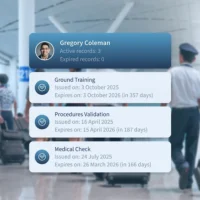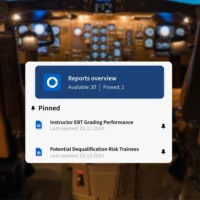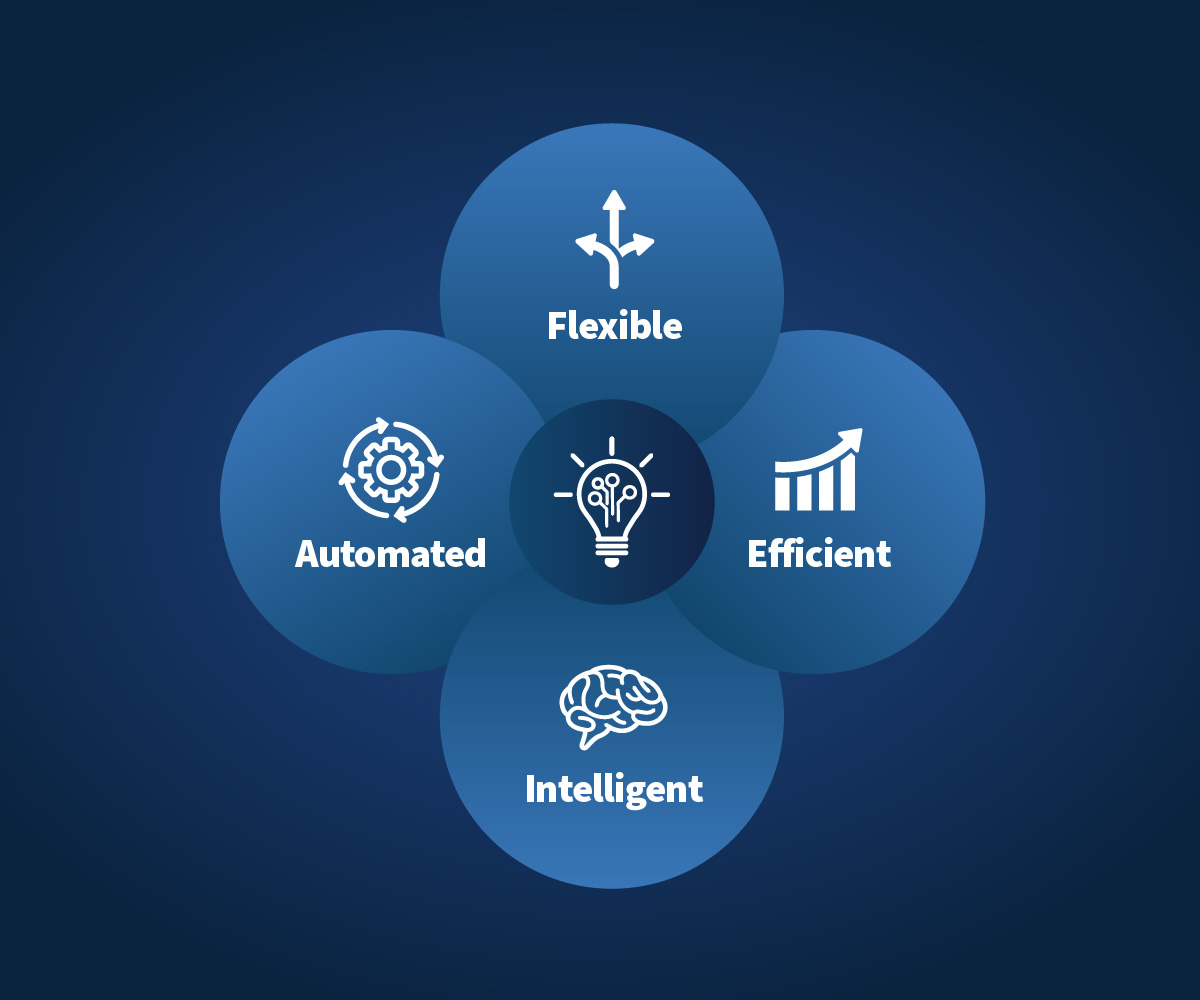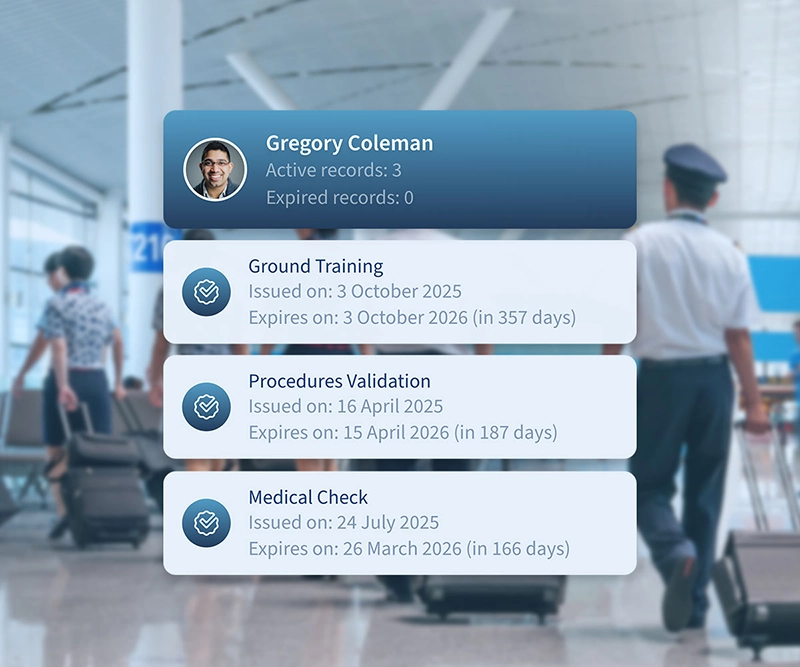Comparing Algorithms for Intelligent Decision-Making in Flight Training Schedules
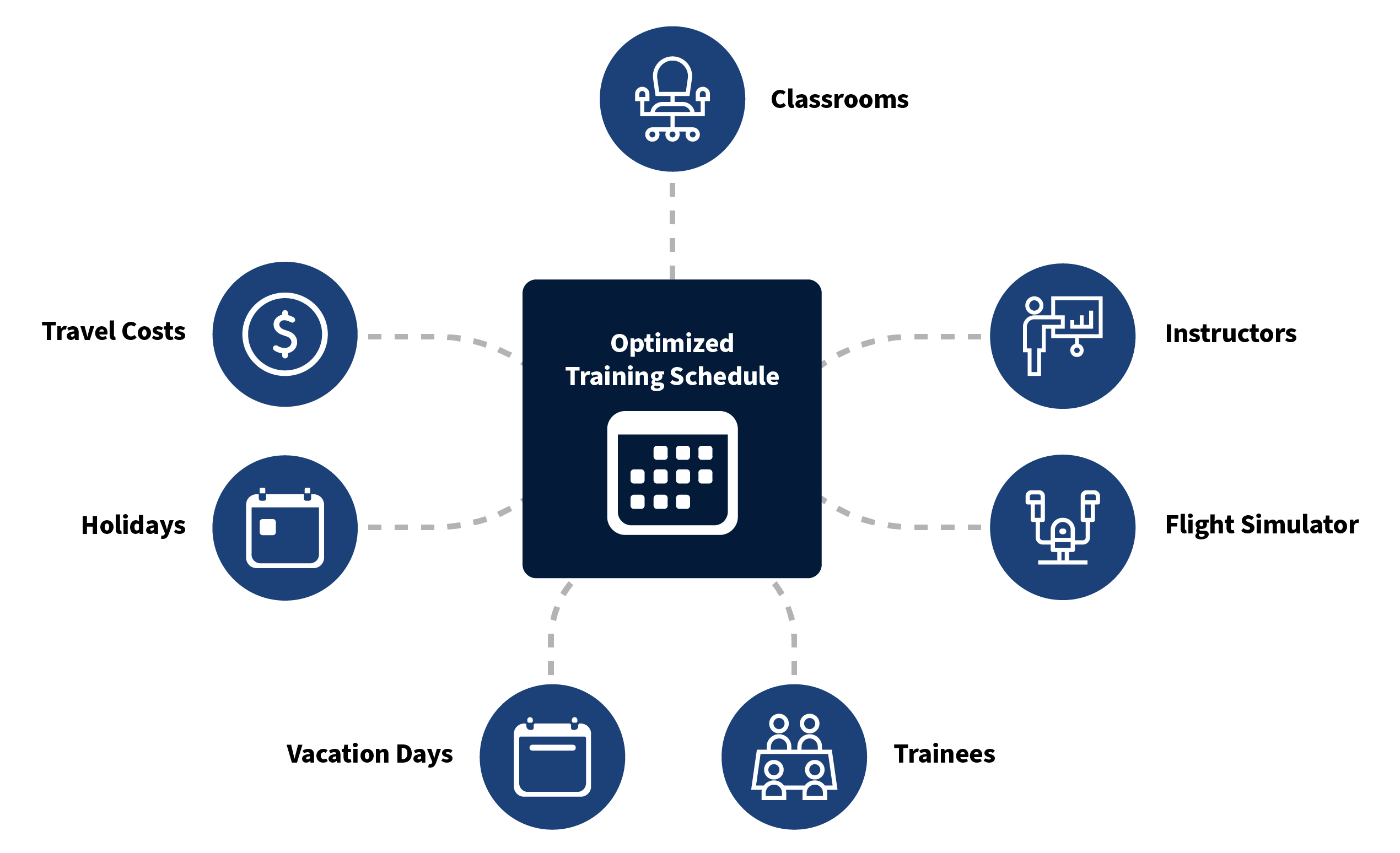
Scheduling optimization for flight training is all about finding the most efficient plan possible by allocating resources with intelligent decision-making. These decisions reduce costs and best utilize an airline’s most expensive resources like flight simulators, classrooms, and instructors. With tons of factors to consider, a manual method using Excel spreadsheets or even a system using a traditional employee scheduling algorithm is ineffective for airline training schedules.
This is where a robust Training Management System (TMS) comes into play.
Leveraging a training management system’s scheduling algorithm can help you achieve your “best” training schedule with little to no manual work for your team. The only question is: Which algorithm is right for you?
Two Different Methods for Intelligent Decision-Making
There is more than one way to compute scheduling optimization. Let’s compare the two most common algorithms, metaheuristics, and mathematical programming, and explore their real-world applications, advantages, and disadvantages.
Metaheuristics: A metaheuristic algorithm is a framework for solving optimization problems. It provides a good, feasible, real-world solution using less computational time.
Mathematical Programming: A theoretical tool for solving decision problems and calculating the best possible allocation of resources. It is a rigid method that requires significant computational time.
Metaheuristics (Real-World Solution)
Used by: MINT Software Systems
Advantages:
- Dramatically Faster
Can calculate an intelligent result in a matter of minutes versus several hours. - Flexible for Ongoing Updates
Changes to schedules are quick to recompute, making it efficient and practical for everyday use, without several hours of processing each time a change is made. - Considers Real-World Scenarios
MINT offers a wide range of criteria for users to tell the system how they want to optimize a schedule. You can configure additional rules like the seniority of training instructors to model elements that usually require a “human touch,” like quality training and fairness. - Highly Configurable
Solutions are easy to understand and implement. MINT’s user-defined rules and scheduling criteria allow you to draft and optimize a schedule based on your specific needs. - Practical for Fast Manual Changes
MINT understands that once you’ve drafted a schedule, you will need to make adjustments often and quickly, as factors change frequently. The system is designed for ease of use and flexible schedule changes, from bulk edits to updating individual details.
Disadvantages:
- Only Looks Forward
MINT’s system does not reconfigure previously scheduled events; it only optimizes a schedule for the selected future time period. Manual changes allow a scheduler to adjust as needed quickly, and recalculating is faster because it does not consider already scheduled events. - Better Results Could Exist
Since the system does not go back to readjust already scheduled events, it may not produce the best possible solution as future training schedules are created and factors change.
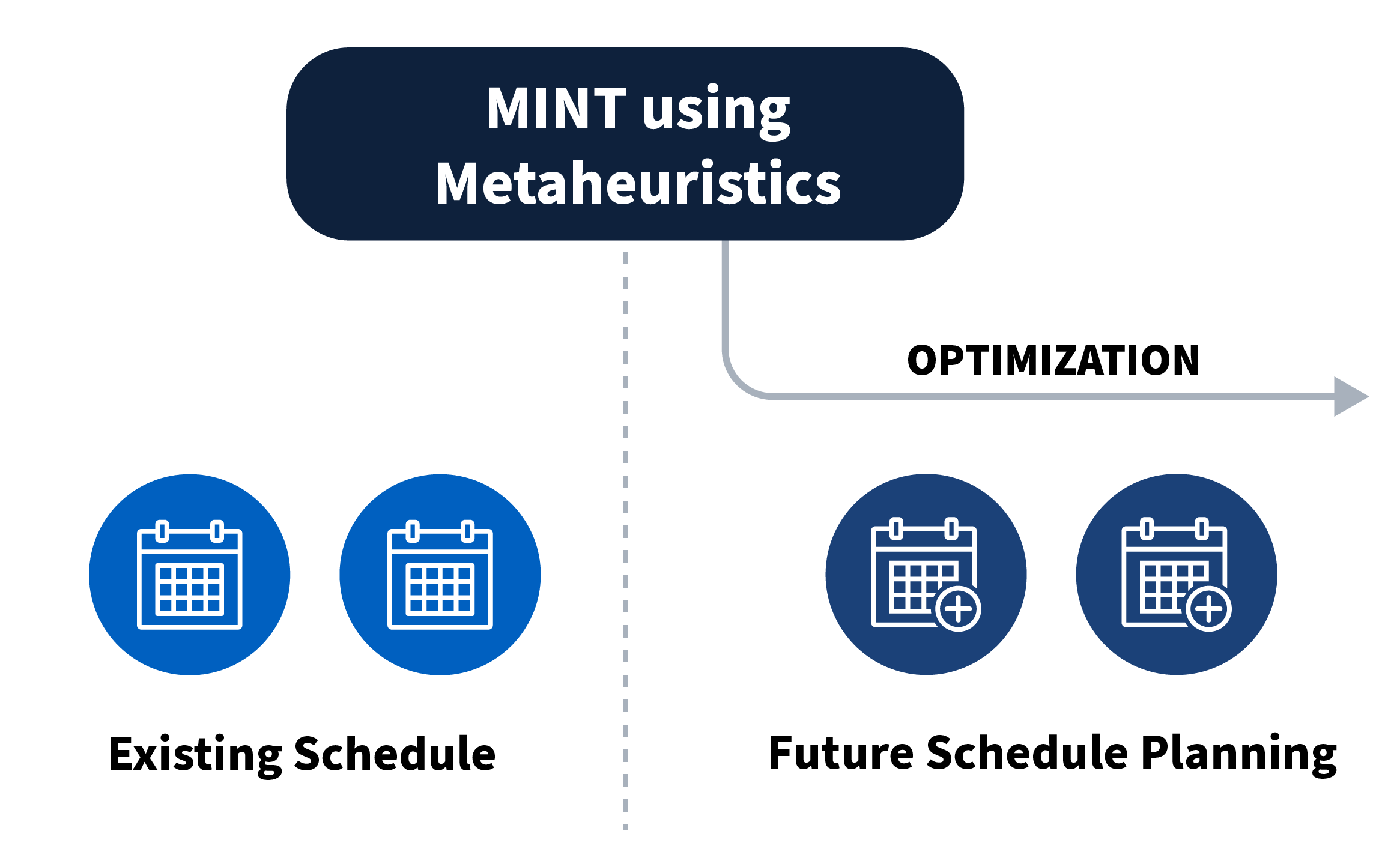
Our metaheuristic algorithm is the best choice for real-world scheduling optimization in MINT’s TMS. It quickly creates optimized schedules that can change frequently, which is a huge advantage in aviation and other fast-paced industries where constant changes are needed.
How MINT Uses Metaheuristics for an Agile, Highly-Configurable Solution
MINT’s one-click scheduling lets you optimize for your desired outcome and define the following criteria:
- Less Fragmented—The system tries to use the minimum number of people, classrooms, and simulators wherever possible.
- Balanced—The system equally distributes the workload (hours) for resources such as training instructors.
- Cost-Based—The system designs a schedule based on resource costs per hour, travel costs, and other costs, to find the least expensive solution.
- Custom Field—The system assigns project resources based on a custom field defined by the user. For example, the Planner can configure instructor assignments by seniority, choose classrooms with the largest capacity, prefer internal instructors over freelance instructors, or other criteria you define.
Need to make a change? The system can re-process and draft a new schedule in minutes. Already scheduled events can be manually adjusted with just a few clicks. The power to optimize your schedule within seconds is always in your hands.
Watch our video about MINT’s Default Scheduling Criteria for a deeper dive into what the system can do.
Why You’d Choose MINT’s TMS
- Ideal when timely decision-making is crucial
- Fast processing means no “downtime” for schedulers using the TMS
- Offers practical answers to real-world scheduling problems
- Flexible for frequent updates without long processing times
- Easy manual updates for bulk or individual edits are ideal for aviation businesses where factors can often change after a schedule is created
Mathematical Programming (Theoretical)
Used by: Competing Training Management Software companies
Advantages:
- Precise but Rigid
Aims to find the best possible resource allocation. - Revises Previously Scheduled Events
Will retroactively adjust already scheduled events if a more efficient solution is determined. This requires continuous maintenance and updates to the schedule. (MINT allows this to be done manually by the scheduler to avoid recomputing).
Disadvantages:
- Significantly Slower and Requires Hours to Compute
Execution takes much more time. Drafting a schedule can take hours or even a full day for larger organizations. - Less Flexibility for Manual Adjustments
Making changes to the schedule, a common and frequent task, starts the long execution process all over again. A simple change could take hours to process as it has to recalculate everything. - Results in Inefficient “Downtime”
Schedulers will be unable to fully utilize the TMS while it is processing, which can create inefficiencies within the department. - Does Not Consider Real-World Scenarios
The system is strictly mathematical. Some real-world processes, such as the “quality” of instructors or “fairness” in scheduling, cannot be accurately modeled.
Mathematical Programming in Competitor’s TMS
- Great at determining the best resource allocation, but slow to process
- The system readjusts previously scheduled events if a better solution becomes available
- Requires significant time to process
- Very rigid. Adjustments require the system to reprocess all over again as everything is recalculated
- Schedule Planners would not be able to use the system during this time
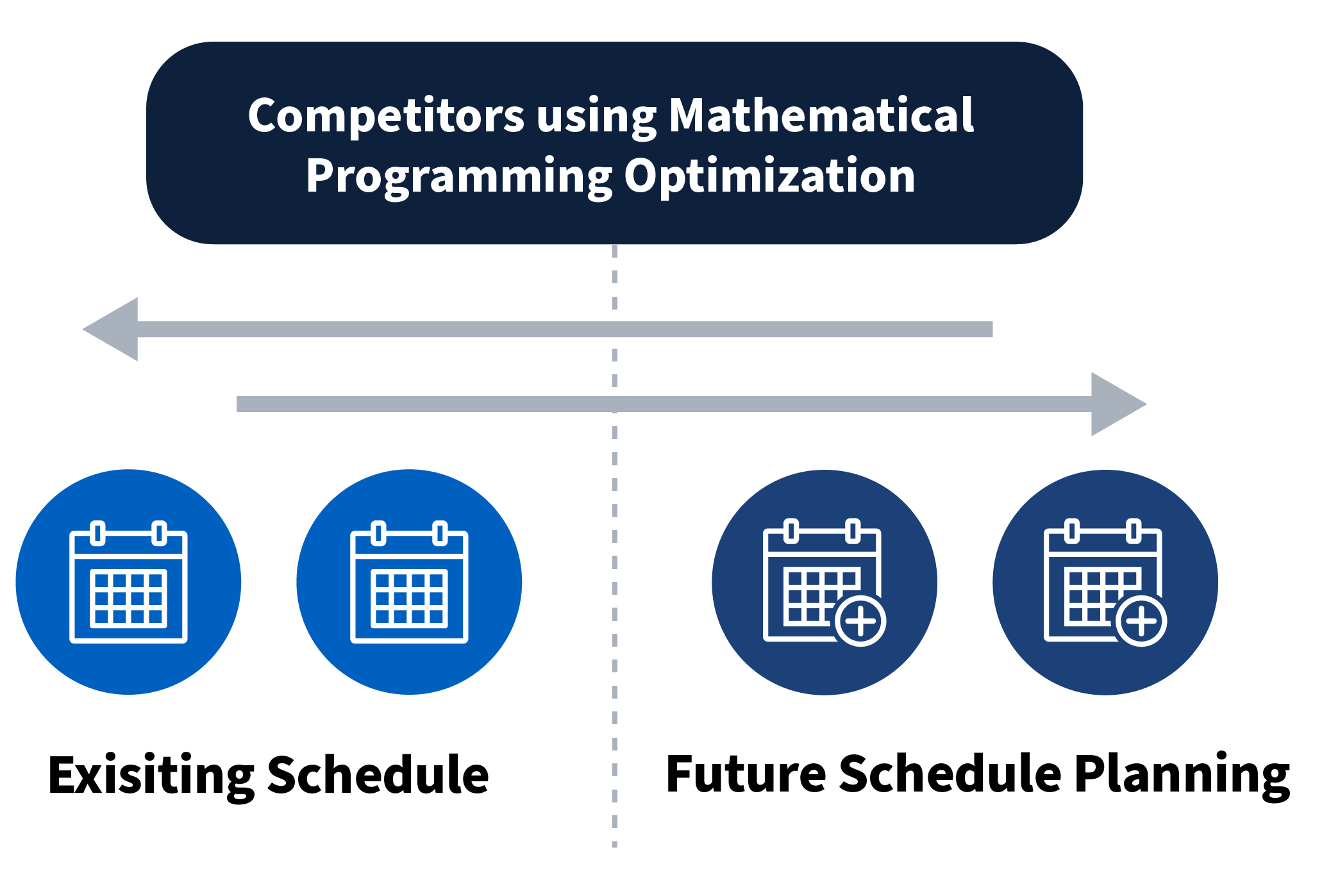
Mathematical programming is good at calculating resource allocation for your schedule, but the amount of time it takes to process isn’t ideal for the fast-paced world of aviation. This method is rigid and does not consider real-world scenarios. Any adjustments to the schedule, which happen often in aviation, require the system to reprocess all over again, making it less efficient.
Optimizing Efficiency: Choosing the Right Algorithm
Every organization’s needs are unique. To choose the right TMS for scheduling optimization, consider the following questions:
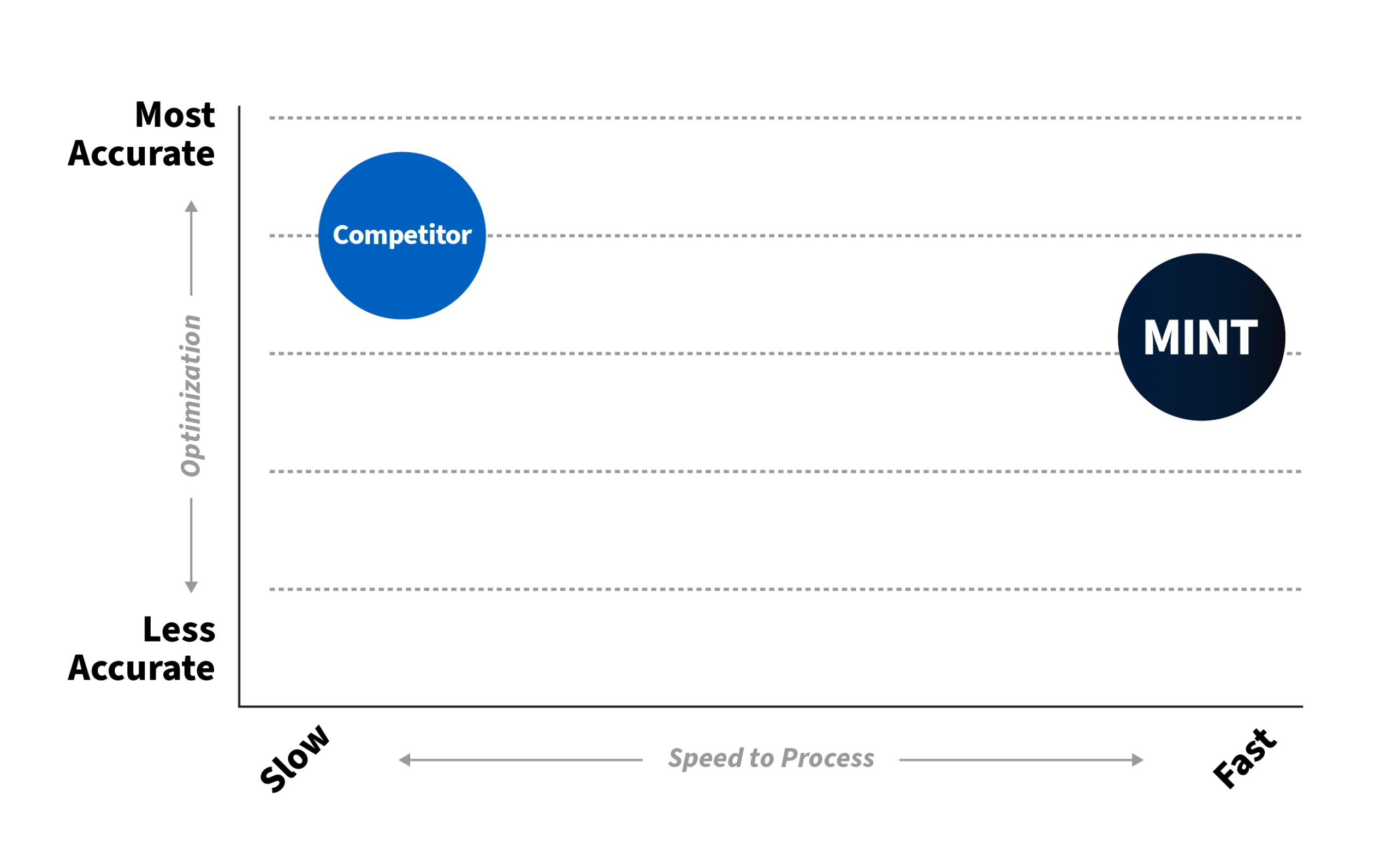
- Does a planned schedule often change before it is published? Is the ability to quickly make these changes important to operations?
- How much of a Schedule Planner’s day would be underutilized if they were waiting hours for the system to compute a result?
- Which is more valued: a slow but precise result or a faster optimal result?
- Do you want a previously published schedule adjusted if a more optimal result becomes available?
- Are other criteria, like a fair workload or employee seniority, important to consider in schedule optimization when assigning training instructors?
Understanding these differences in algorithms and their use in a TMS helps organizations pick the best option to boost efficiency and improve training outcomes. Would you like to consult with a MINT Software Systems expert about the best way to optimize your flight training schedules?


